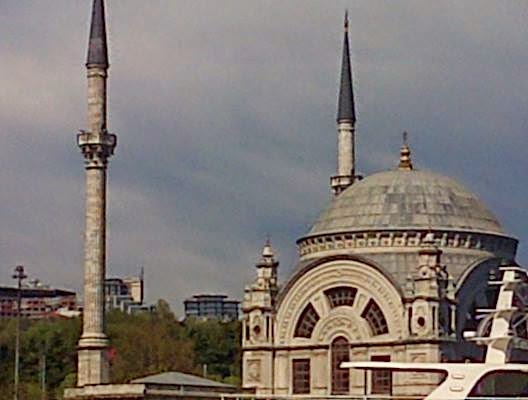First time in Istanbul.
Roarrrring Istanbul!!!!!
First time at the IKSV Film Festival.
Roarrring Film Festival!!!!!!!!!
And what a punch in the stomach, both the metropol and the festival!
Possibly the oldest and largest and most appealing film festival in this side of Europe, the IKSV Fest is having endless films on display:
fiction and doccs altogether,
a billion guests and parties and welcome and goodbye and presentation drinks
and enchanting food,hype venues,
one of the most breathtaking looking female staff
on the planet
and among the most efficient
and PRO,
and several parallel sections, such as "meetings on the Bridge" the worldwide famous
co-production meetings,
as well as a lavish display of new Turkish films!!!!
Having seen most of the films in previous international gatherings, my main ounch
this time in Istanbul, especially to the anthropologist in me,
was the French-cambodgian film about the survivers of the horror years
of that paradisial country...
The genocide that Pol Pot
and his henchmen
systematically applied
to the Cambodgian society
erased as many as
2 million people.
Roarrrring Istanbul!!!!!
First time at the IKSV Film Festival.
Roarrring Film Festival!!!!!!!!!
And what a punch in the stomach, both the metropol and the festival!
Possibly the oldest and largest and most appealing film festival in this side of Europe, the IKSV Fest is having endless films on display:
fiction and doccs altogether,
a billion guests and parties and welcome and goodbye and presentation drinks
and enchanting food,hype venues,
one of the most breathtaking looking female staff
on the planet
and among the most efficient
and PRO,
and several parallel sections, such as "meetings on the Bridge" the worldwide famous
co-production meetings,
as well as a lavish display of new Turkish films!!!!
Having seen most of the films in previous international gatherings, my main ounch
this time in Istanbul, especially to the anthropologist in me,
was the French-cambodgian film about the survivers of the horror years
of that paradisial country...
The genocide that Pol Pot
and his henchmen
systematically applied
to the Cambodgian society
erased as many as
2 million people.
It also left a nation
that still has 4 million land mines
buried in its soil,
just waiting for an unsuspecting farmer or his child.
A pseudo-communist regime,
the Khmer Rouge was
anti-bourgeois in the extreme.
While they shared a similar disgust
for middle-class materialism
as many left-wing groups did,
they took it to the extreme, for middle-class materialism
as many left-wing groups did,
and out of context.
All comfort was anti-revolutionary.
More importantly,
being a peasant uprising,
being a peasant uprising,
the Khmer Rouge was horribly anti-intellectual.
Learning
beyond man as a tool
for the agrarian socialist revolution
was subversive.
And it had to be eliminated
by any means necessary.
According to the Khmer Rouge,
and their leader Pol Pot,
who was actually an educated person,
people of culture, humanities, the arts,
music, literature, etc.,
were better off dead.
The supposed left
had become extremely right.
This true holocaust
had almost no photographic evidence.
What little footage exists
has been used in “The Missing
Picture,”
the Oscar-nominated film from director Rithy Panh
that I saw
at
the fabulously garnished film festival ISKV in Istanbul,
in April 2014.
in April 2014.
It describes the director’s father’s childhood
experiences
in the Killing Fields,
the locations Cambodian citizens were taken
to from the cities,
forced to do labor.
But there is no documentation
of the years Panh’s father
spent in horrid conditions,
watching his family members die one by one,
watching color fade away,
watching his society slip into dehumanization…
There are no
images
of his father
doing hard labor…
Or burying family and friends who died
while sleeping next to him…
So Panh re-creates
that world
using carved clay figures,
to tell the untold stories of millions of
Cambodians,
and specifically that of his father,
who was just a boy
when the
Khmer Rouge rolled into Phnom Penh.
This isn’t stop-motion animation.
Panh has created
tableaux
described by his father.
So it doesn’t take much
to accept these
figurines as very real people..
…And more importantly,
to understand and accept
the
unbelievable suffering,
the torture,
the executions
and their ability to barely
cling to life during this time period.
That’s exactly why “The Missing Picture”
is so
devastating.
Panh has created those missing pictures for us,
and
reminded us
that these events happened not just on a massive scale,
that these events happened not just on a massive scale,
but also on
a very individual one.
The people who endured that were and are
very real.
…And yes,
we now live in a new
millennium,
and the Cambodian holocaust is now a piece of the past…
But those events were so horrific
that, perhaps,
it takes
figures made of clay
to be able to accept it.
The result is a stunning
meditation
on loss
and memory,
with no shortage of anger, too,
in order to boost
the narrative.
giulia dobre-april2014, Istanbul



















No comments:
Post a Comment